Lavender Flower: Types, Growing, Planting, Watering, Pruning and Care
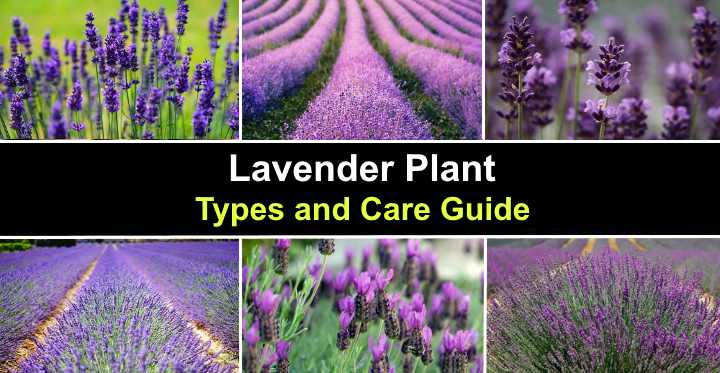
Lavender flowers with their vivid shades of purple, lilac, blue, pink, and even white are beautiful aromatic flowering spikes growing on small perennial shrubs. Lavender plants typically bloom in summer and fill gardens with fragrant aromas and stunning colors. Despite being native to the Mediterranean region, lavender shrubs are easy to grow in colder climates.
Most types of lavender have fragrant flowering spikes in purple shades and hues. However, many kinds of hardy lavenders have flowers in deep pink, light pink, brilliant white, violet-blue, and rosy red. The narrow fuzzy silvery-green oblong lavender leaves are also aromatic, adding to the value of this perennial shrub.
This article is a guide to growing various types of lavender in your garden landscape. Descriptions and pictures of flowering lavender plants will help you choose the suitable variety for your yard. In addition, you will find helpful growing tips to ensure your compact lavender plants will grow for many years.
What Is Lavender (Lavandula)?
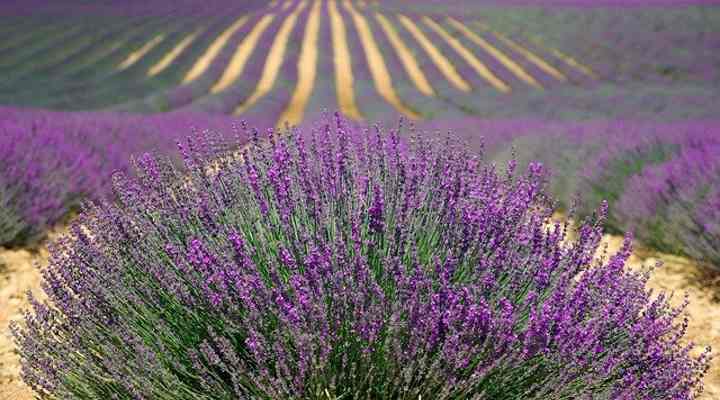
Lavender is a flowering herbaceous perennial plant or a small shrub. In the picture: a field of lavender plants
Lavender is an ornamental evergreen perennial shrub-like flowering plant in the mint family Lamiaceae. There are nearly 50 species of flowering lavender plants, and many cultivars thrive in temperate climates. Lavender flowers are easily recognizable due to their colorful purple blooms, upward growing woody stems, and herbal, woody floral aroma.
The most common type of lavender bush is English lavender (Lavandula angustifolia), which thrives in USDA zones 5 through 9. French lavender plants are not tolerant of cold and only thrive in USDA zones 9 and above. Spanish Lavender is cold hardy in zones 8 to 10.
Lavender shrubs have an upright habit with long stems covered in thin gray-green leaves measuring 1” to 2” (2.5 – 5 cm) long. Typically, purple or lilac flowers grow on long shoots. Typically, lavender shrubs can grow 1 to 3 ft. (0.3 – 1 m) tall; however, some shrubs grow up to 6 ft. (1.8 m) tall.
Ideas For Planting Lavender Flowers
Apart from the aromatic lavender flowers, one reason to grow this compact shrub is its versatility. Lavender shrubs are ideal for growing in perennial borders, foundation plantings, herb gardens, and mixed beds. Additionally, lavender shrubs are suitable as container plants. Growing lavender in pots means you can enjoy flowering lavender on a balcony, patio, container garden, or decorate an entrance-way.
How to Care For Lavender Flowers
To grow lavender, plant the aromatic shrub in full sun, where it gets at least six hours of daily sunshine. Lavender thrives in well-drained, moderately fertile soil that stays mostly dry. Prune back the stems in spring and hold off watering during winter. Lavender doesn’t require fertilization.
Lavender Blooming Seasons
Lavender typically blooms during summer, and the stunning purple flowers can last until fall. However, lavender varieties and cultivars can bloom in early spring and rebloom in late summer or fall, depending on the species. Some types of Spanish lavender can bloom from early spring and last until late summer.
Early blooming lavender plants: Most French lavender cultivars bloom in early spring, around May.
Summer blooming lavender plants: English lavender usually produces purple flowers in summer. The lavender bush can bloom from late spring until late summer, depending on the cultivar.
Late-blooming lavender plants: Lavandin (Lavandula x intermedia) is a lavender hybrid that typically blooms in July and August. The flowers last until the end of summer.
Lavender Leaves
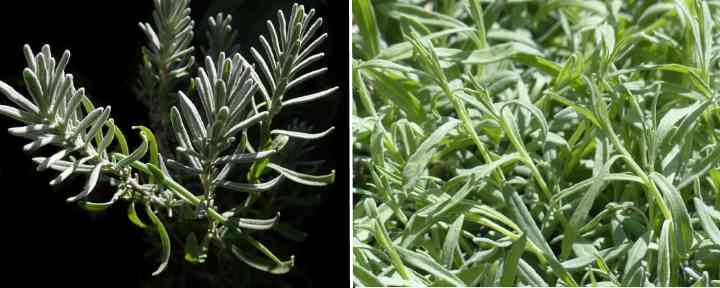
Lavender leaves
Leaves growing on lavender shrubs are narrow, elongated blades that grow in simple arrangement on upright woody stems. The aromatic leaves are covered in soft, star-shaped hairs called trichomes. Depending on the cultivar, lavender leaves can have serrated edges. The narrow leaves on lavender plants grow 1” to 2” (2.5 – 5 cm) long.
Lavender Flower
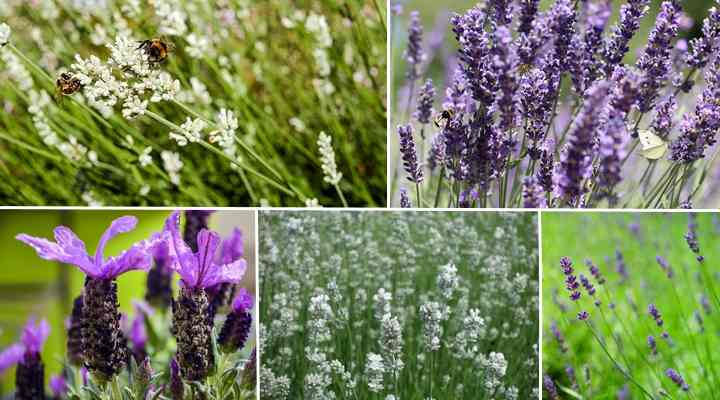
Lavender flowers
Lavender flowers are clusters of tiny tube-shaped blossoms with several flowers making up each inflorescence. The violet, purple, lilac, pink, or white aromatic lavender flowers form spikes on the end of long stems. Like the leaves, lavender flowers contain a highly fragrant oil. Lavender flowers grow 8” – 16” (20 – 40 cm) long.
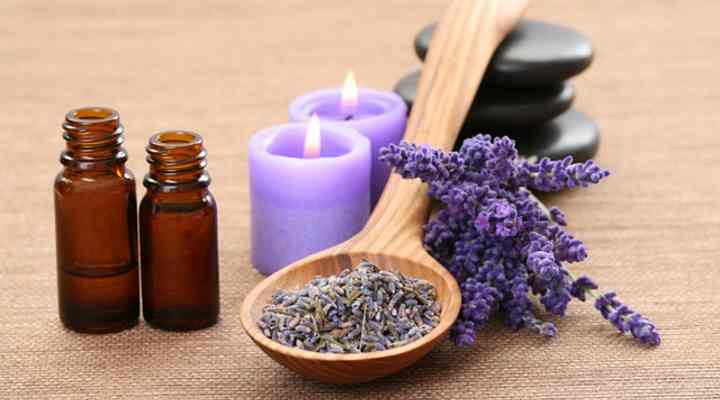
Lavender flowers are a source of lavender essential oil
Common Types of Lavender
Most types of lavender in cultivation are from the four most common lavender varieties. However, each lavender type has distinctive characteristics to help identify them. Additionally, the climate where lavender grows best depends on the variety and cultivar.
English Lavender (Lavandula angustifolia)
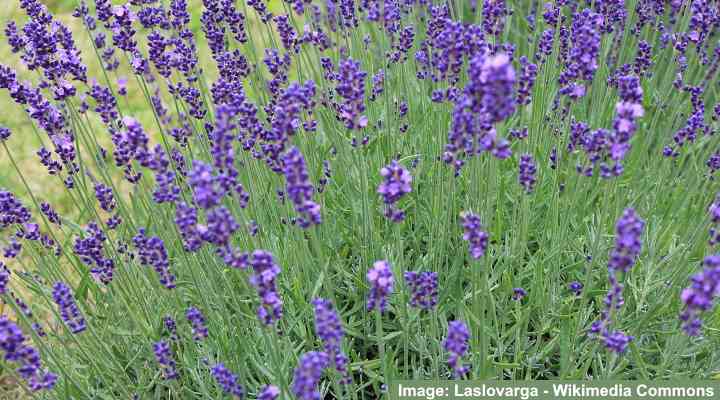
English lavender flowers (Lavandula angustifolia)
English lavender is native to the Mediterranean and is the most popular lavender variety. The fragrant dark purple lavender blooms consist of tightly-growing deep purple tube-like flowers. The violet flower heads grow on the ends of tall flower stalks and are taller than the leaf stems.
English lavender is an aromatic shrub that grows between 1 and 3 ft. (0.3 – 1 m) tall. The shrub’s leaves are gray-green elongated with rounded tips. English lavender flowers grow in cylindrical clusters measuring 1” – 3” (2.5 – 7.5 cm) long on leafless stalks growing up to 12” (30 cm) tall.
English lavender flowers are edible and have a distinctive aroma. There are many uses for lavender flowers in cosmetics, herbal medicine, and cooking. Due to their heady, floral aroma, the flowers are also used in potpourri.
English lavender thrives in USDA zones 5 through 9 and requires full sun and well-drained soil.
Lavender Flower Color: Lavender, purple-blue, or violet-blue.
Lavender Flower Bloom Time: June through August.
French Lavender (Lavandula dentata)
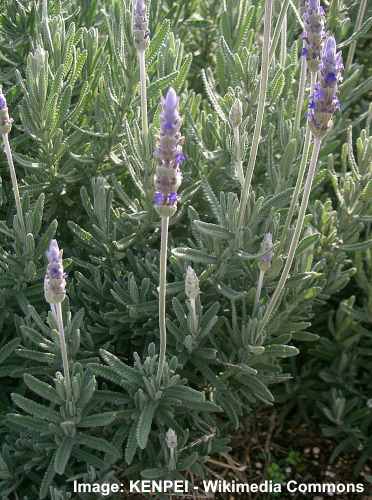
French lavender flowers and leaves (Lavandula dentata)
French lavender has flowering spikes of light purple or pale lilac flowers, grayish-green leaves with toothed or dented margins, and a characteristic lavender aroma. The identifying feature of Lavandula dentata is its serrated leaves. The botanical name dentata means toothed. French lavender flowers are the classic shade of lavender (light shade of purple), and unlike English lavender, French lavender flowers are pointed, not cylindrical, spikes.
Also called fringed lavender, French lavender flowers grow on short stems, and the light mauve or purple spikes are relatively short. Another feature of French lavender leaves is that they extend outward rather than upward. The flowers typically bloom in mid to late summer and persist until fall.
French lavender is a popular aromatic shrub to grow in containers. This lavender variety grows 2 to 3 ft. (0.6 – 1 m) tall in the ground or pots. The bushy evergreen lavender shrubs thrive in USDA zones 8 through 11 and need full sun and well-drained soil.
Lavender Flower Color: Light purple to pale lilac.
Lavender Flower Bloom Time: Mid-summer until fall.
Spanish Lavender (Lavandula stoechas)
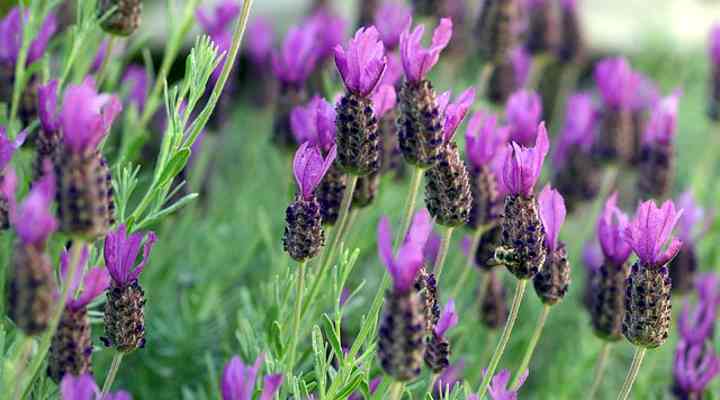
Spanish lavender flowers (Lavandula stoechas)
Spanish lavender has easily identifiable lilac and dark purple or pinkish-purple flowers that look like tiny pineapples. The lavender flowers consist of cylindrical purple spikes with lilac petals (bracts) emerging from the inflorescence. Unlike most lavender varieties, Spanish lavender flowers are not highly aromatic.
A feature of Spanish lavender leaves is their strong lavender aroma. The leaves are light green and linear or lance-shaped that grow in a simple arrangement on long stems. Spanish lavender leaves grow 1” to 4” (2.5 – 10 cm) long.
Spanish lavender flower spikes measure 0.8” (2 cm) long and have papery ovoid petals that grow 0.4” to 2” (1 – 5 cm) long. The lavender flowers grow on leafless stems measuring 4” – 12” (10 – 30 cm) long.
Spanish Lavender is cold hardy in zones 8 to 10 and requires full sun and well-drained soil.
Lavender Flower Color: Dark violet, dark pink, deep purple.
Lavender Flower Bloom Time: Spring and early summer.
Lavandin (Lavandula x intermedia) — Hybrid Lavender
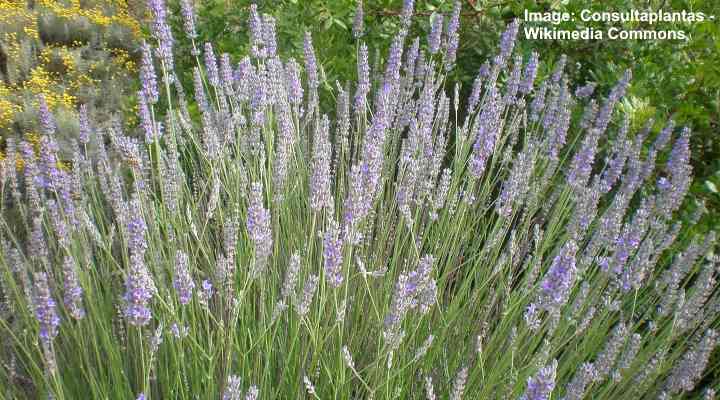
Lavandin flowers (Lavandula x intermedia)
Lavandin is a cold-hardy hybrid lavender variety with slender purple flowering spikes, silvery-green or gray-green narrow leaves, and a sweet floral scent. Of all lavender types, lavandin is one of the strongest-smelling lavender plants. The color of the lavender flowers can be pink, purple, or white.
Lavandin (hybrid lavender) plants are tolerant of heat like Portuguese lavender (Lavandula latifolia) but with the cold-hardiness of English lavender (Lavandula angustifolia). This lavender hybrid is hardy in USDA zones 5 to 9.
Suppose you are looking for a lavender shrub to produce abundant purple flowers. In that case, lavandin hybrid cultivars are the best choice. The highly aromatic flowers and leaves grow profusely on the shrub, making it one of the best lavender shrubs for flowers.
Lavender Flower Color: Deep violet, dark pink, lilac.
Lavender Flower Bloom Time: July or August and persisting until late summer or early fall.
How Often to Water Lavender
Lavender needs very little water to thrive. Lavender plants only need regular watering during the first year after planting. After that, lavender plants are highly resistant to drought. Water lavender every two to three weeks unless there has been rainfall. During winter, it’s not necessary to water lavender.
Overwatering lavender growing in the ground or a container can cause root rot and fungal disease.
When to Plant Lavender
The best time to plant lavender shrubs is in the spring. Wait until the threat of frost has passed, and the soil is at least 60°F (15°C) when planting young, immature lavender plants. You can also plant mature lavender shrubs before the first frost in the fall.
How to Plant Lavender
The easiest way to plant lavender is to buy small starter shrubs from a nursery. Dig a hole big enough to accommodate the root ball and plant the herbaceous perennial plant at the same height as before. Plant lavender 2 to 3 ft. (0.6 – 1 m) apart if you want to grow a flowering border or informal hedge.
How to Prune Lavender
Cut back about one-third of lavender stems in spring to encourage bushy growth. However, it’s important not to prune too much back into wood growth near the base of the plant. Annual pruning ensures that your lavender shrub grows for many years, producing abundant blooms and staying disease-free.
Growing Lavender in Pots

Potted lavender plants
Lavender is an ideal flowering shrub for growing in a container. To grow lavender in a pot, getting the correct sun exposure, moisture level, and temperature is essential. Container lavender plants require a minimum of six hours of sunlight and relatively dry soil. Only water a potted lavender plant when the soil is dry.
Like lavender growing in the ground, only water a potted lavender plant outdoors if there has been no rainfall. Water lavender once every two weeks to prevent the soil from completely drying out during the growing season. Also, ensure that the container has excellent drainage to avoid damp, overly soggy soil from causing root rot.
Related article: Lavender Tree: Care and Growing Guide (Watering, Pruning and More).
Types of Lavender (with Pictures)
English Lavender ‘Nana Alba’ (Lavandula angustifolia ‘Nana Alba’)
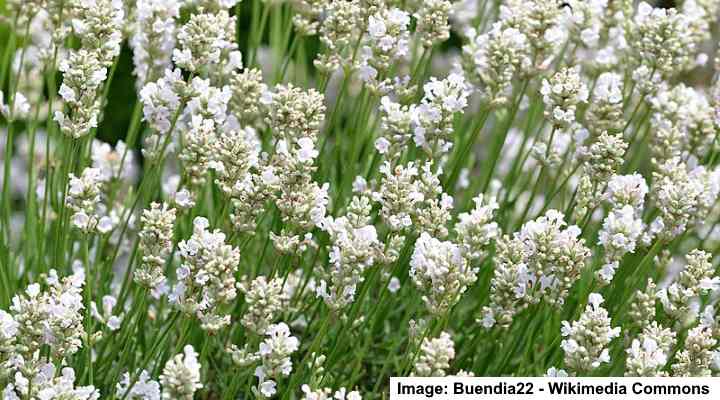
Flowers of English lavender ‘Nana Alba’
‘Nana Alba’ is a white English lavender plant with spikes of snow-white, long-lasting summer flowers in short spikes. The perennial dwarf white lavender plant has a bushy dome and grows up to 12” tall (30 cm) and spreads up to 20” (50 cm). This white English lavender variety is hardy in zones 5 to 9.
Related reading: Stunning white flowering shrubs.
English Lavender ‘Hidcote’ (Lavandula angustifolia ‘Hidcote’)
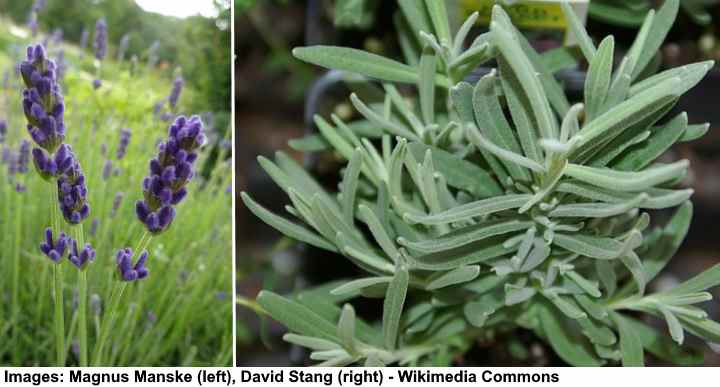
Flowers and leaves of English lavender ‘Hidcote’
English lavender ‘Hidcote’ is a beautiful lavender variety with dark purple flower spikes, fuzzy linear silvery-green leaves, and a delightful aroma. ‘Hidcote’ lavender is an early-blooming variety that produces masses of purple flowers. The lavender ‘Hidcote’ cultivar grows 12” to 20” (30 – 50 cm) tall in full sun and dry, well-drained ground.
Lavender Hybrid ‘Grosso’ (Lavandula x intermedia ‘Grosso’)
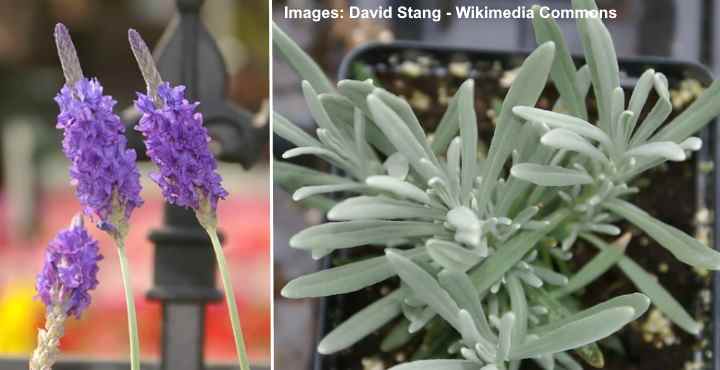
Flowers and leaves of lavender hybrid ‘Grosso’
The lavender hybrid ‘Grosso’ has the most fragrant lavender flowers from any cultivar. The large slender deep purple flower spikes and gray-green aromatic leaves make this an excellent herbaceous shrub to grow in zones 6 through 10. ‘Grosso’ lavender grows up to 3 ft. (1 m) tall and has a compact growth habit.
English Lavender ‘Munstead’ (Lavandula angustifolia ‘Munstead’)
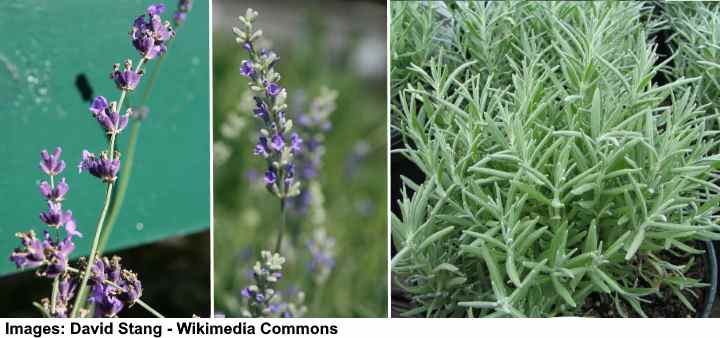
Flowers and leaves of English Lavender ‘Munstead’
The English lavender cultivar ‘Munstead’ is a hardy shrub with an abundance of light purple flowers. ‘Munstead’ lavender plants have long-lasting flowers that bloom from late spring through summer. The 2-foot (0.6 m) tall flowering shrub has highly aromatic lavender flowers and gray-green leaves.
Phenomenal Lavandin (Lavandula x intermedia ‘Niko’)
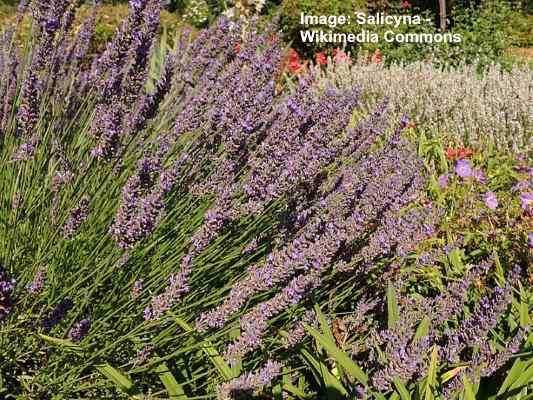
Phenomenal Lavandin flowers (Lavandin ‘Niko’)
The lavender hybrid lavandin ‘Niko’ is a compact, rounded shrub with late-blooming aromatic light purple flowering spikes. The large 5-inch (12 cm) purple lavender spikes grow on the ends of foot-long (30 cm) leafless stems. Lavender ‘Niko’ thrives in dry, sunny conditions and is cold-hardy to zone 5.
Lavender Hybrid ‘Seal’ (Lavandula × intermedia ‘Seal’)
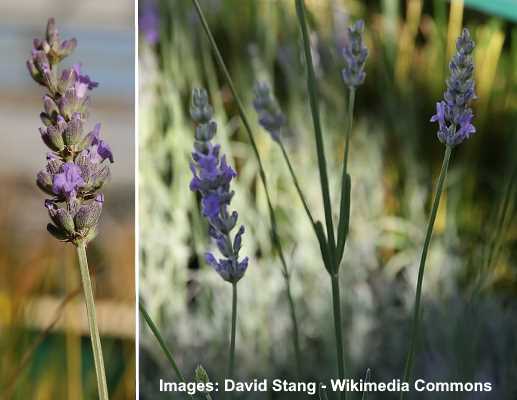
Flowers of lavender hybrid ‘Seal’ (Lavandin ‘Seal’)
The lavender hybrid ‘Seal’ variety is an aromatic evergreen shrub with violet-purple flowers growing in spiked clusters. A feature of ‘Seal’ lavender flowers is their long-lasting aroma that can persist in dried flowers for several years. Lavandin ‘Seal’ grows 2 to 3 ft. (0.6 – 1 m) tall and wide. The silvery-green foliage contrasts nicely with the light purple flowers.
Lavandin ‘Edelweiss’ (Lavandula × intermedia ‘Edelweiss’)
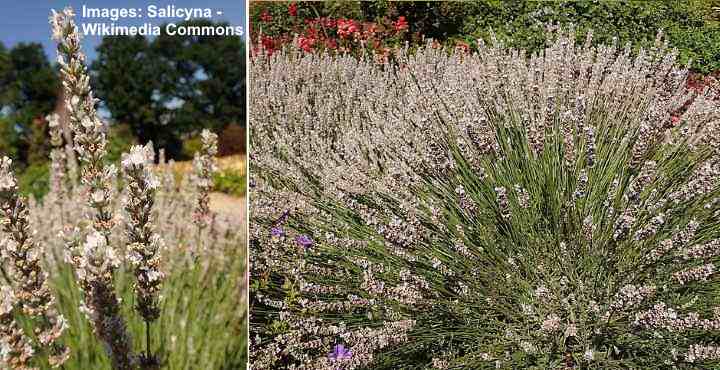
Flowers of lavandin ‘Edelweiss’
‘Edelweiss’ lavandin is a lavender hybrid with intensely aromatic white flowers and silvery-green leaves. This white lavender plant has broader leaves and longer stalks compared to regular purple lavender varieties. The spreading lavender hybrid shrub blooms in mid-summer to late fall and grows up to 3 ft. (1 m) tall.
Lavandin ‘Provence’ (Lavandula × intermedia ‘Provence’)
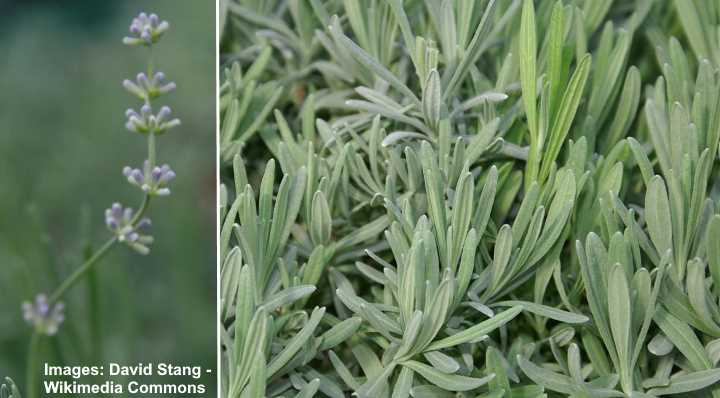
Flowers and leaves of lavandin ‘Provence’
The lavender hybrid ‘Provence’ is a highly fragrant garden herb with huge pale-purple flowering spikes and silvery-green thin linear fuzzy leaves. Also called ‘Fat Lavender,’ the flower clusters can measure up to 3” (8 cm) long. Additionally, the lavender flowers are more aromatic than other hybrid varieties. Lavandin ‘Provence’ grows up to 3 ft. (1 m) long and wide.
Lavandin ‘Super’ (Lavandula × intermedia ‘Super’)
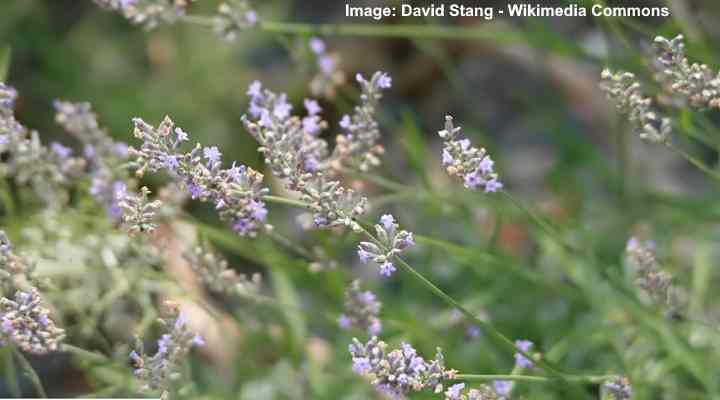
Flowers of lavandin ‘Super’
Flowers growing on the lavender hybrid ‘Super’ are a pale purple color that gives off a lavender aroma. The lavender shrub is identified by its large, pointed lilac-colored flower heads, light green foliage, and pleasant fragrance. Lavandin ‘Super’ is an evergreen garden shrub that grows up to 2.5 ft. (0.75 m) tall.
More Care Tips For Growing Lavender
There are a few essential things to remember when caring for lavender plants. First, lavender loves heat and relatively infertile soil. It is also vital to avoid too much moisture in the ground. Finally, to prevent fungal diseases, grow lavender with plenty of space between plants.
Propagating lavender plants
To propagate a lavender shrub, cut a length of healthy hardwood or softwood stem just below a leaf node. Ideally, the cutting should be 3” to 4” (7.5 – 10 cm) long. Next, remove all the lower leaves to have a 2” (5 cm) leafless section at the cut end.
Next, plant the cutting in a small pot containing equal parts of perlite and damp peat moss. Cover with a plastic bag to lock in humidity and heat and keep the soil moist by misting it occasionally. It takes two to four weeks for softwood cuttings to root and slightly longer for hardwood cuttings.
Once rooted, remove the plastic cover and place the young lavender plant in a sunny location. Water whenever the top 1” (2.5 cm) of soil is dry. After three or four weeks, transplant the shrub to a larger container or your garden.
Growing lavender in every climate
What are some considerations when growing lavender in different climates?
Growing lavender in warm climates: In regions with long, hot summer days, lavender needs some protection from the midday sun. It is essential to ensure plenty of airflow between plants in warm, humid climates.
Growing lavender in cold northern climates: Choose a cold-hardy type of English lavender to grow in USDA zones 5 through 9.
Related articles:
